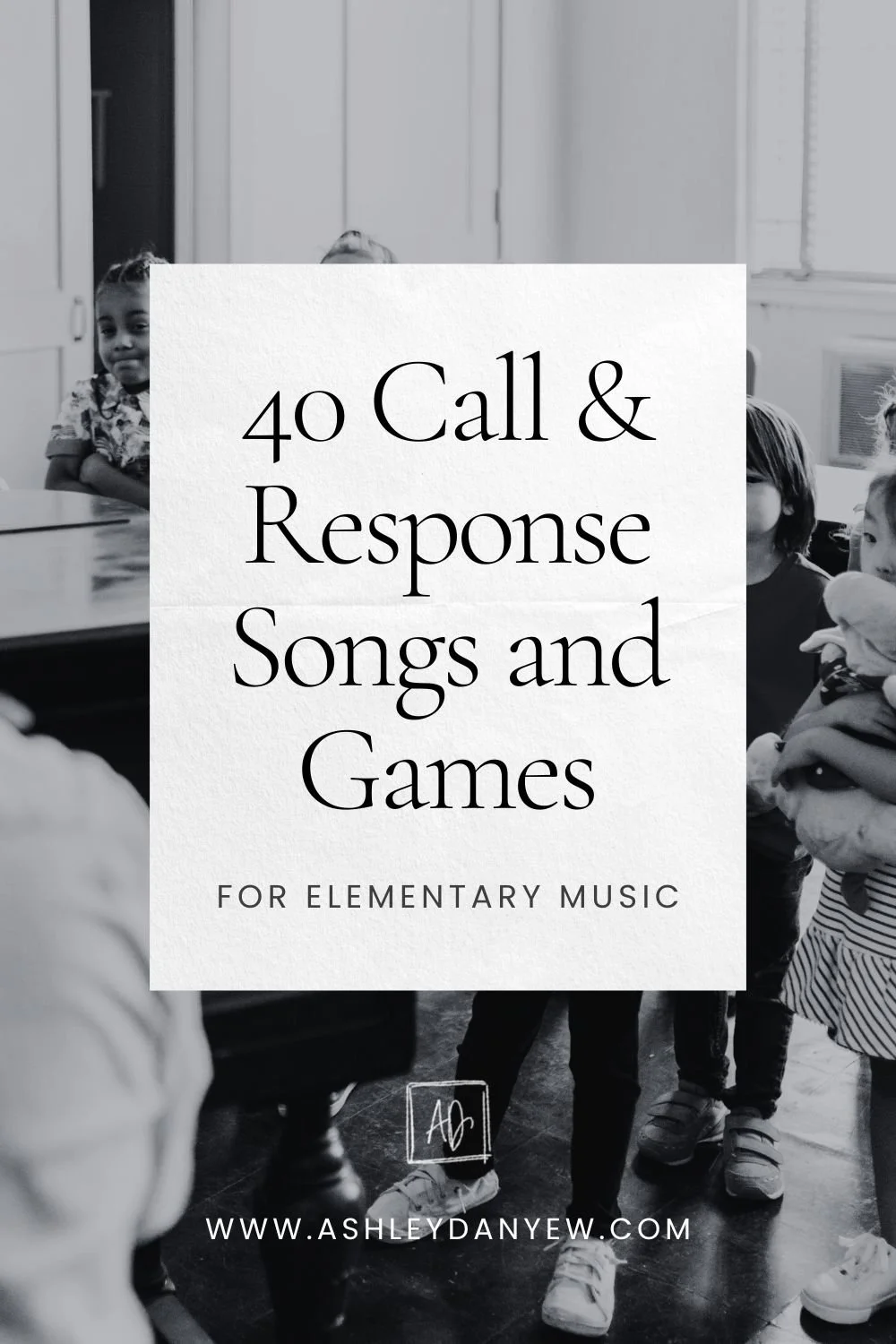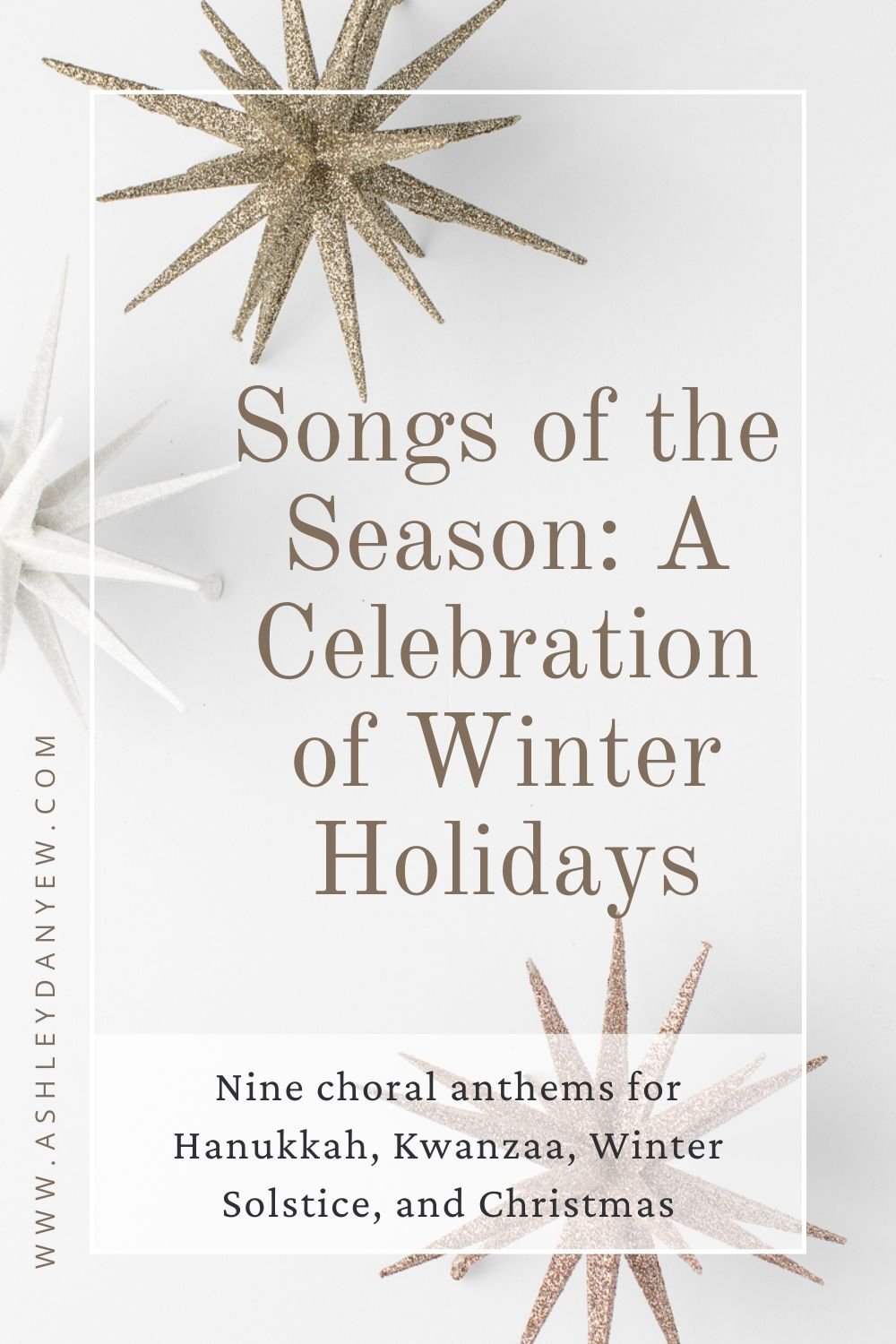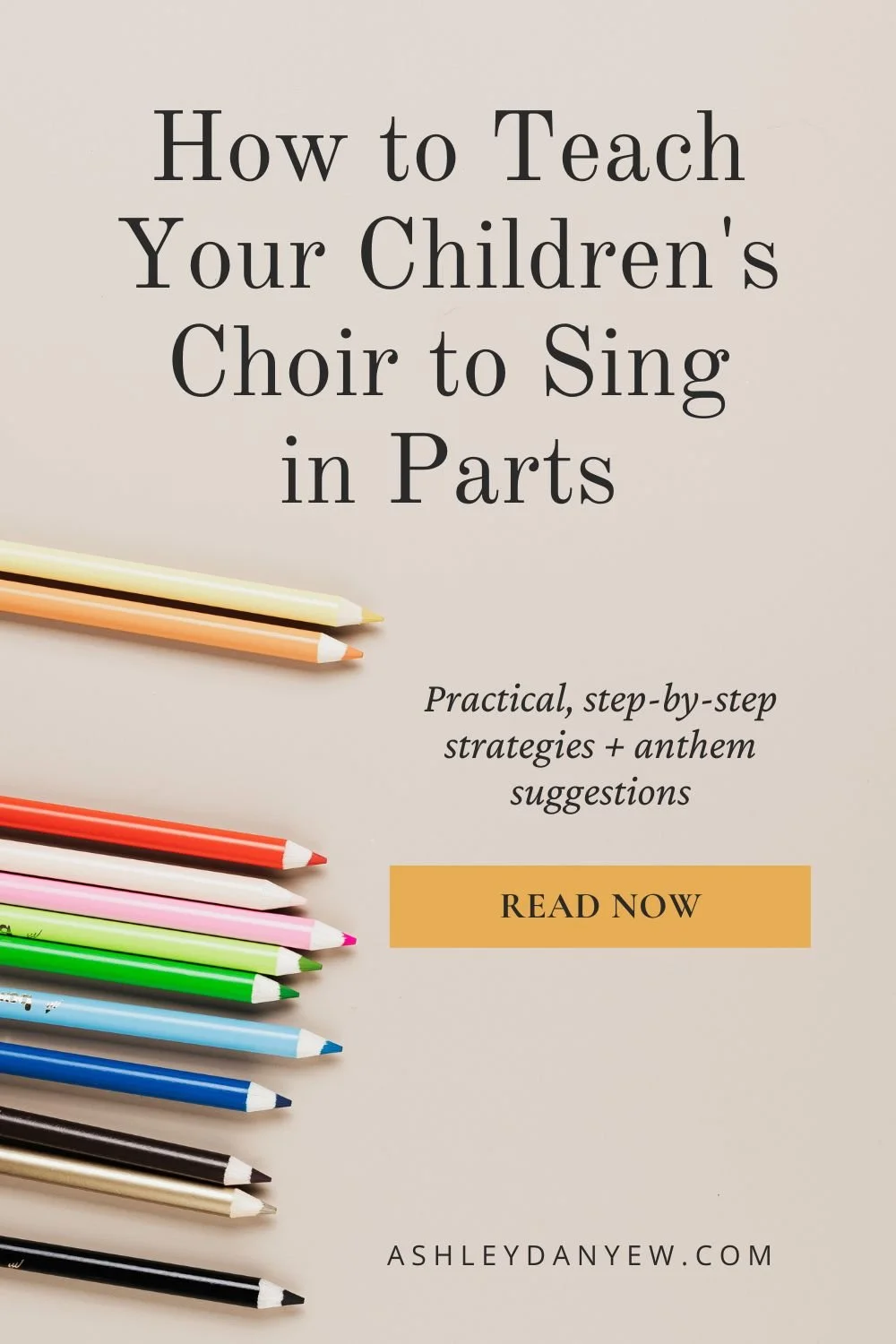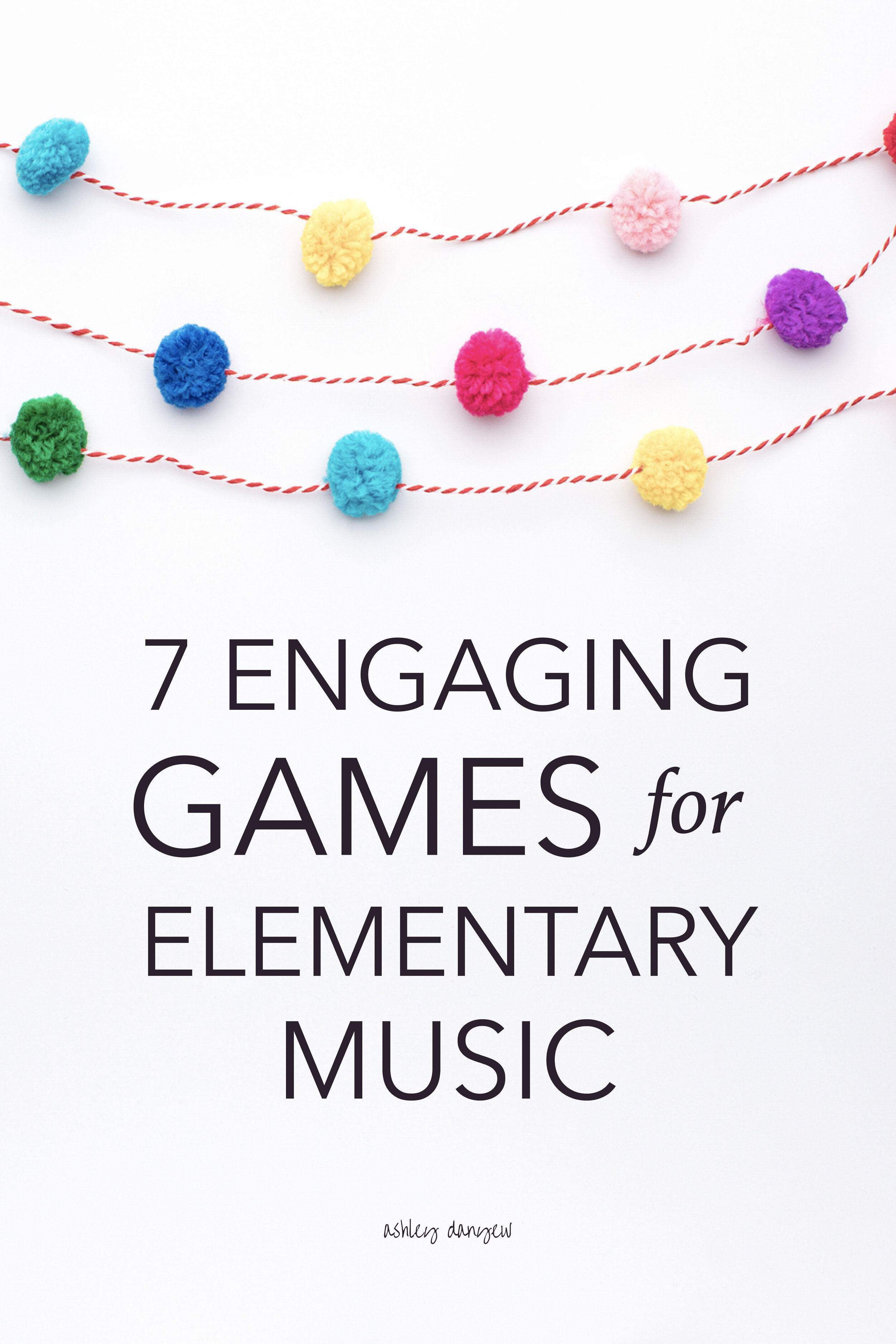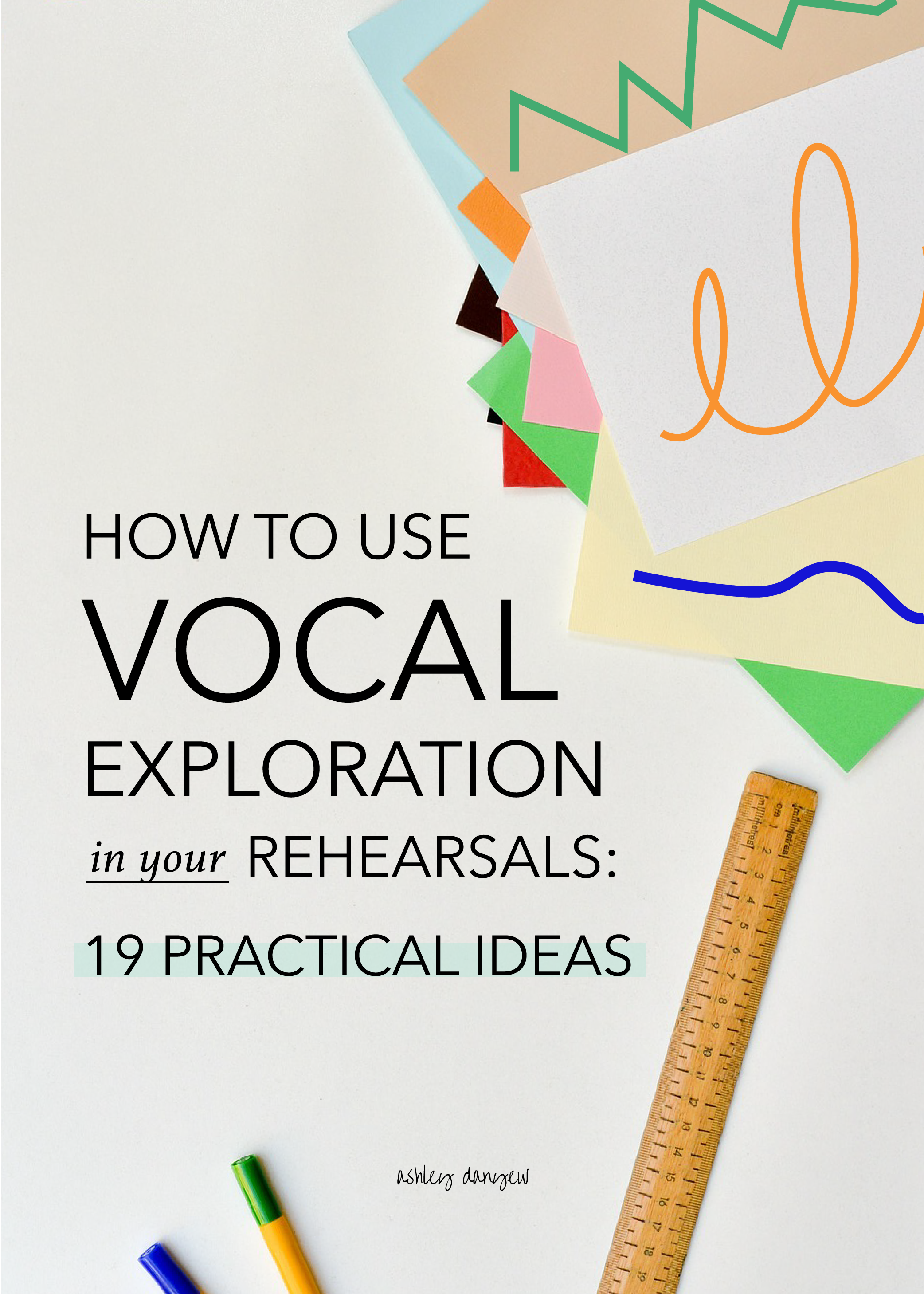Transitions are a fact of life, but they can seem especially cumbersome and drawn out when working with a group of children.
It takes time for everyone to come in
and get settled.It takes time to get everyone quiet
and listening to directions.It takes time to pass out instruments
or other props.It takes time to collect instruments
or other props.It takes time to move to another area
of the room.
You get my point. And when your classes or rehearsals are only 30 minutes, the amount of time you spend transitioning from one thing to another can really add up.
Here’s a question: What if you could make these transition times musical? What if you could keep children engaged, listening, moving, and singing, even, as they transition from one activity to the next?
Today, I’m sharing 12 practical transition songs you can use in your elementary music classes or children’s choir rehearsals.
The great thing about these songs is that the lyrics have directions embedded in them. For instance, when you want children to have a seat on the floor in a circle, chant “Everybody Have a Seat.” The lyrics are:
“Everybody have a seat, have a seat, have a seat;
everybody have a seat on the floor.
Not on the ceiling, not on the door!
Everybody have a seat on the floor."
Simply begin singing the song (and thus, singing your directions) and invite the children to join in once they know it.
Three Benefits of Using Transition Songs
1. You'll save time.
Using familiar songs to transition from one thing to another will become a musical clue that you're about to do something new. This will save you time introducing the next activity, giving directions, and responding to those who are not paying attention.
2. You'll spend more time making music.
Think about the number of minutes you spend singing, moving, listening, and making music together? How much do you spend doing other things (giving directions, explaining something new, addressing behavior issues, asking everyone to quiet their voices, sit down, put their hands in their laps, listen, etc.)?
Now, think about if you used music during your transition times—fewer spoken directions, less time spent introducing things, and likely fewer behavioral problems (because the children will be listening, singing, and moving to the music), but the best part is, you'll be capturing that otherwise wasted time and making more music instead!
3. You'll keep everyone engaged.
Transition songs are particularly helpful if you work with young children (preschool, early elementary). I think you’ll find the added structure of preparing for the next activity and knowing what to do will help everyone stay on task and help your classes and rehearsals run much smoother.
Here are 12 practical transition songs to use with your preschool or elementary singers:
When You’re Waiting for Everyone to Arrive
Show Me - this game incorporates singing, movement, and listening. This would make a great gathering activity, as children can join in quickly and easily as they arrive. Simply play the Ella Jenkins recording and let her do the rest!
Having trouble with the link? Listen on Spotify.
When You Start Rehearsal
Hello - a simple, two-phrase song that is somewhat call and response. Sing it first, then invite the children to join you. Add in clapping the next time, then ask them to sing it alone. Other variations: sing the piece on “la.”
Having trouble with the link? Listen on Spotify.
Hello, Everybody, Yes, Indeed - a happy “hello” song that can be sung to everyone, or customized with each child’s name.
Hello, Everybody, How Do You Do? - a friendly welcome song that incorporates each child’s name and a reminder that “God loves you today.” (*Note: I recommend starting in a slightly higher key than the one used in this video.)
When You Need to Get Up and Move
Follow the Leader - a fun way to move around the room, listen to the directions in the song, and use body percussion (clap your hands, slap your thighs, tap your knees, stamp your feet, slide your feet, etc.).
Having trouble with the link? Listen on Spotify.
Do As I’m Doing - sing this simple song as you move to another part of the room and encourage children to imitate your motions (or the motions of a particular child who is leading).
When It’s Time to Sit on the Floor
Everybody Have a Seat - a quick and easy rhythmic chant that gives directions for you and invites children to have a seat on the floor (by the end of the song!).
Can You Clap, Clap, Clap - spoken as a rhythmic chant, this song invites children to move, listen to directions, and at the end, sit quietly on the floor.
“Can you clap, clap, clap; can you snap, snap, snap;
Can you wiggle, wiggle, wiggle; can you slap, slap, slap;
Can you wrap your arms around yourself and give yourself a hug
Can you sit quietly on the rug?"
When You Take Out Instruments
Play Your Instruments and Make a Pretty Sound - a great way to encourage children to make music (“make a pretty sound”) in a free and creative, yet still somewhat structured way. Listen to the directions in the song to stay engaged, help keep a steady beat, play and listen for different dynamics, and give children an opportunity to play their instrument alone and with others.
Instruments mentioned include: cowbell, rhythm sticks, maracas, triangle, castanets, and tone blocks
Having trouble with the link? Listen on Spotify.
When You Put Instruments Away
Put Your Instruments Away - sung to the same tune as “Play Your Instruments and Make a Pretty Sound” (above), this is a musical way to transition from playing instruments to continuing with your rehearsal. Again, all the directions are in the song.
Having trouble with the link? Listen on Spotify.
When You Need to Get the Wiggles Out
And One and Two - all the directions are in this listening/movement singing game. Invite children to listen for the action or movement, do the action or movement for eight beats, then do it twice as fast when the tempo changes. Remember, freeze when you get to eight to wait for the next set of directions! This is a great way to get the wiggles out mid-rehearsal and introduce the concept of tempo - slow and fast.
Having trouble with the link? Listen on Spotify.
Songs like "If You’re Happy and You Know It” and "Father Abraham” are oldies, but goodies, as well.
When It’s Time to Go
Shake Hands With Friends - a simple, repetitive goodbye song that encourages children to sing and shake hands with different friends in the room.
Having trouble with the link? Listen on Spotify.
I’d love to hear from you:
What are your favorite transition songs to use with preschool or elementary singers?
Everything you need to plan fun, engaging rehearsals in one easy, printable packet.
Introducing The Planning Kit for Children's Choir Directors: a 22-page collection of printables, templates, and worksheets to help you get organized, plan fun and engaging rehearsals, and teach with confidence.
More Resources:
Songs and Chants for Antsy Pants (Kathie Hill)
Easy Songs for Smooth Transitions in the Classroom (Nina Araújo, Carol Aghayan)




